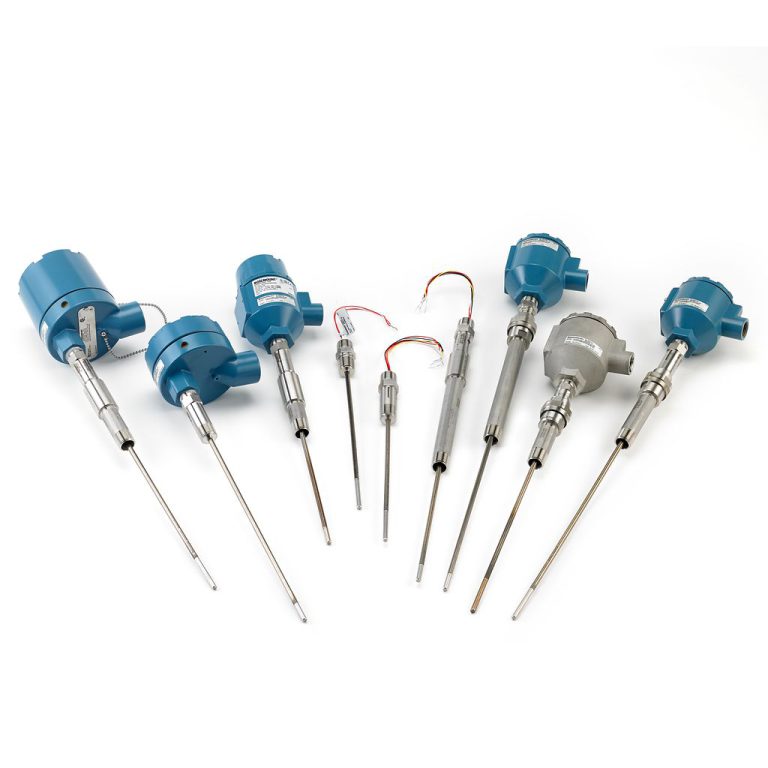ترموکوپل(Thermocouple)، که به آن زوج حرارتی نیز گفته میشود، به پدیده ای در فیزیک گفته میشود که در آن با اتصال دو فلز الکتریکی ناهمگون با همدیگر بعد از گرم شدن محل اتصال تولید الکتریسیته میشود. برای تولید برق باید محل اتصال دو فلز را حرارت داد. در این صورت در دو سر دیگر که آزاد هستند (اصطلاحا سر سرد) برق تولید میشود. البته برقی که به این صورت تهیه میشود بسیار کم است. به این صورت که وقتی به محل اتصال این دو فلز حرارت داده شود، اختلاف پتانسیلی در دو سر این فلزها بوجود میآید. این اختلاف پتانسیل متناسب با میزان حرارت اعمال شدهاست و بنابراین با بررسی میزان ولتاژ خروجی میتوان درجه حرارت اعمال شده به ترموکوپل را تشخیص داد.

برتری عمده ترموکوپلها محدوده وسیع اندازهگیری آنهاست که به طور معمول از ۱۸۰- تا ۱۸۰۰+ درجه سانتیگراد را در برمی گیرد.
دیگر امتیاز ترموکوپلها، عملکرد خطی آنها در محدوده اندازهگیری است.
ترموکوپلها دارای تیپهای متنوع برای اندازهگیری دما میباشند بطور مثال تیپهای R,S,B با قابلیت اندازهگیری دما در محدوه ۲۰۰- درجه الی ۱۸۰۰درجه و تیپهای L,J,K با قابلیت اندازهگیری دما در محدوده ۱۸۰- درجه الی ۱۰۰۰ درجه سانتیگراد بکار میروند. ولتاژ بوجود آمده در دوسر انتهایی ترموکوپل در هر صورت mv ورفتار الکتریکی هر ترموکوپل بسته به نوع آلیاژ سیمهای آن تابع جداول استانداردی است که معمولاً در استانداردهای کشورهای مختلف تعریف و تقریباً در هر تیپ منبطق بر یکدیگر است. یکی از انواع معمول آن ترکیب آلیاژکروم و نیکل میباشد. معمولاً جهت جلوگیری از آسیب دیدن ترموکوپل آن را درون غلاف فلزی یا سرامیکی(تیوپ محافظ) قرار میدهند. روش جوشکاری دوسر ترموکوپل تابع ضوابط خاصی است بطوری که نباید در حین عملیات جوشکاری فلز یا احیاناً نیمههادی دیگری در فرایند جوش دخالت نماید در غیر اینصورت رفتار ترموکوپل هرگز رفتار استاندارد تعریف شده تابع جداول مربوطه نخواهد بود
در ادامه انواع ترموکوپل به همراه آلیاژ به کاربرده شده همچنین محدوده اندازه گیری و دقت ترموکوپل ها ارایه میگردد:
Type K Thermocouple (Nickel-Chromium / Nickel-Alumel): The type K is the most common type of thermocouple. It’s inexpensive, accurate, reliable, and has a wide temperature range
:Temperature Range
(Thermocouple grade wire,-454 to 2,300F (-270to 1260C
(Extension wire, 32 to 392F (0 to 200C
:(Accuracy (whichever is greater
Standard: +/- 2.2C or +/- .75%
Special Limits of Error: +/- 1.1C or 0.4%
Type J Thermocouple (Iron/Constantan): The type J is also very common. It has a smaller temperature range and a shorter lifespan at higher temperatures than the Type K. It is equivalent to the Type K in terms of expense and reliability
:Temperature Range
(Thermocouple grade wire, -346 to 1,400F (-210 to 760C
(Extension wire, 32 to 392F (0 to 200C
:(Accuracy (whichever is greater
Standard: +/- 2.2C or +/- .75%
Special Limits of Error: +/- 1.1C or 0.4%

Type T Thermocouple (Copper/Constantan): The Type T is a very stable thermocouple and is often used in extremely low temperature applications such as cryogenics or ultra low freezers
:Temperature Range
(Thermocouple grade wire, -454 to 700F (-270 to 370C
(Extension wire, 32 to 392F (0 to 200C
:(Accuracy (whichever is greater
Standard: +/- 1.0C or +/- .75%
Special Limits of Error: +/- 0.5C or 0.4%

Type E Thermocouple (Nickel-Chromium/Constantan): The Type E has a stronger signal & higher accuracy than the Type K or Type J at moderate temperature ranges of 1,000F and lower. See temperature chart (linked) for details
:Temperature Range
(Thermocouple grade wire, -454 to 1600F (-270 to 870C
(Extension wire, 32 to 392F (0 to 200C
:(Accuracy (whichever is greater
Standard: +/- 1.7C or +/- 0.5%
Special Limits of Error: +/- 1.0C or 0.4%

Type N Thermocouple (Nicrosil / Nisil): The Type N shares the same accuracy and temperature limits as the Type K. The type N is slightly more expensive
:Temperature Range
( Thermocouple grade wire, -454 to 2300F (-270 to 392C
Extension wire, 32 to 392F (0 to 200C
:(Accuracy (whichever is greater
Standard: +/- 2.2C or +/- .75%
Special Limits of Error: +/- 1.1C or 0.4%
:(NOBLE METAL THERMOCOUPLES (Type S,R, & B
Noble Metal Thermocouples are selected for their ability to withstand extremely high temperatures while maintaining their accuracy and lifespan. They are considerably more expensive than Base Metal Thermocouples

Type S Thermocouple (Platinum Rhodium – 10% / Platinum): The Type S is used in very high temperature applications. It is commonly found in the BioTech and Pharmaceutical industries. It is sometimes used in lower temperature applications because of its high accuracy and stability
:Temperature Range
(Thermocouple grade wire, -58 to 2700F (-50 to 1480C
(Extension wire, 32 to 392F (0 to 200C
:(Accuracy (whichever is greater
Standard: +/- 1.5C or +/- .25%
Special Limits of Error: +/- 0.6C or 0.1%

Type R Thermocouple (Platinum Rhodium -13% / Platinum): The Type R is used in very high temperature applications. It has a higher percentage of Rhodium than the Type S, which makes it more expensive. The Type R is very similar to the Type S in terms of performance. It is sometimes used in lower temperature applications because of its high accuracy and stability
:Temperature Range
(Thermocouple grade wire, -58 to 2700F (-50 to 1480C
(Extension wire, 32 to 392F (0 to 200C
:(Accuracy (whichever is greater
Standard: +/- 1.5C or +/- .25%
Special Limits of Error: +/- 0.6C or 0.1%

Type B Thermocouple (Platinum Rhodium – ۳۰% / Platinum Rhodium – ۶%): The Type B thermocouple is used in extremely high temperature applications. It has the highest temperature limit of all of the thermocouples listed above. It maintains a high level of accuracy and stability at very high temperatures
Temperature Range
Thermocouple grade wire, 32 to 3100F (0 to 1700C
Extension wire, 32 to 212F (0 to 100C
Accuracy (whichever is greater
Standard: +/- 0.5%
Special Limits of Error: +/- 0.25%





